Photography by Maxim Dondyuk
In this photojournal, Ukrainian photographer Maxim Dondyuk documents the tuberculosis epidemic in the hospitals, prisons and homes of the East European nation where multi-drug resistant tuberculosis (MDR-TB) affects almost 7,000 people annually, and approximately 30 lives are lost to the disease each day.
Ukraine has the highest mortality rate from infectious diseases in the WHO European region–90 percent of those deaths result from HIV/AIDS and tuberculosis
Ukraine is among 27 countries considered by the World Health Organization (WHO) to be significantly burdened with MDR-TD. The factors contributing to Ukraine’s TB problem are numerous: inadequate commitment and capacity of health administrators, insufficient laboratory capacity and supply management, limited health screenings, lack of access to drugs, lack of patient support, and scarce infection control standards have all been cited by the organization.
Drug resistant tuberculosis is created when drug treatment is not completed. TB bacterium, attacked with drugs but left to recover, develops immunity to the treatment. When additional drugs are used in aborted treatments, the limited amount of tuberculosis cures become useless against the disease, When a resistant strain of tuberculosis is created in a host, that resistant strain is passed on to others.
Photographer Maxim Dondyuk here offers us a chance to view the human side of the TB epidemic devastating the lives of so many Ukrainians.
Konstantin “Salman” was diagnosed in prison. He was treated for four months with TB drug injections, fed by his mother who visited every evening, before dying of MDR-TB and HIV in Kherson TB hospital.
Katerina was treated in Horlivka TB hospital after being diagnosed for a complaint of a longstanding cough. She is now retired.
Andrew and Inna became acquainted in the dispensary during their treatment. They call each other husband and wife, and hop one day to register their marriage and have a family. Shortly after being freed from prison, Andrew got ill in “the zone.” All of his documents were stolen during a house robbery that took place while he was incarcerated. Because he had no housing on the books, official residential registration was not possible, and the two had not been able to register their marriage.
Vasily spends summers in the hospital yard and winters in the corridor because he wets his bed. He fumbles his speech, and thinks he is at work. He says that he is waiting for the doctors to sign his resignation notice. Rumors around the hospital have it that his relatives have taken his flat and sent Vasily to the hospital. An unknown woman visits monthly, bringing a bag full of food, but she denies that she is a relative of the man.
Kherson TB hospital.
Valentina has worked at Novozburevka TB hospital laundry for 25 years.
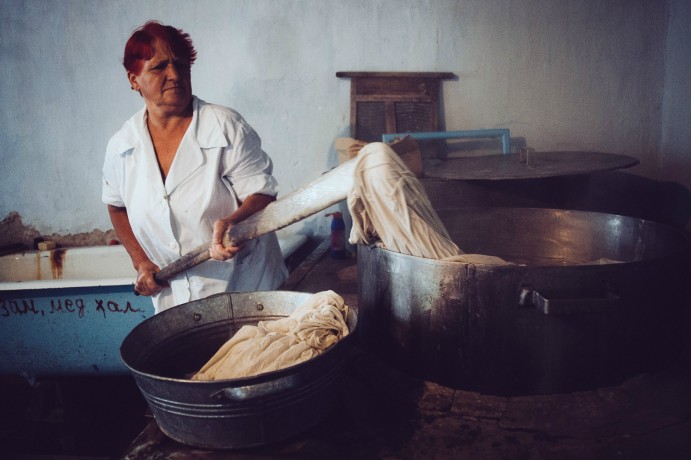
Bedding and clothing belonging to tuberculosis patients are disinfected by boiling.
Valera showed the scar from the surgery that removed the right side of his lungs. Since the operation, his whole life has changed dramatically.
Leonid mined coal in the Krasny Luch mine since 1949. An injury at the mine left his backbone broken and lung injured. It also caused TB. He had been taking 10 courses over a period of 8 years. Leonid’s legs were failing, and he had been taken for another examination. The tests did not show TB. The next day his family took him home, but a month and a half later he died.
Leonid was married and had a son. Early in his life he had lived in the USSR and was an electrician and a shoemaker. Has contracted TB in jail. He was taken to the hospital with a temperature, which had persisted for a month. He received medical treatment in prison, and felt better. After he was released, his condition worsened, and he couldn’t walk. Leonid’s brother brought him to a TB hospital. Four months later he was again able to walk.
At the hospital, Leonid met Olga, and they lived together in the hospital from 2001 on. All of the doctors knew them and called them husband and wife. Their conditions improved after treatment, and they returned together to Leonid’s home, but returned again to the hospital after symptoms worsened again.
Read more: Drug-Resistant Tuberculosis Rising to Global Threat – WHO
Anatoly had contracted TB in a nursing home. His was a widower, and had no children. In 1975 he graduated from Kharkov Military Officers School with an honors degree. Afterwards, he served in the Navy aviation regiment in Stargrad, Poland, and piloted the supersonic fighter aircraft MIG-19. After a year of service, during one of the missions, a junior mechanic made a mistake, and Anatoly, without checking, signed off on it. This led to problems in the military, and caused nervous stress. Upon an X-ray examination, spots in lungs showed up on his lungs. He was sent to the flight school, where he worked until 1965 re-training pilots, but he was later transferred to the reserve for health reasons. After that he entered the Institute of Journalism, and worked as a journalist for the newspaper Zarya in Volgograd area, his home city. He wanted to publish his own books. Copies of his books were kept in the Council of writers in Rostov-on-the-Don. After the breakup of the Soviet Union, however, his manuscripts disappeared.
“I was a big man, and became nobody,” he said. Because of sclerosis and bad eyesight he couldn’t write. Every day he does morning exercises, but this makes him giddy. But his desire to live is more than that of a young man.
One of his poems, which he could remember, was titled “I want to die in Russia:”
I want to die in Russia
Where grass rustles on the steppes
Where sits a blue sky over the Don
Where are the shackles of old-time
I want to die in Russia
Where the steppes are pink with everlasting flowers
A sign that there is more good than death
Christ will pave the dawn himself
I came from eternity and to eternity will go
I will take away with me the smell of grass forever
The smell of morning roses, fragrant roses
All the sufferings of the faith
And my soul will soar
And meet with poets of the century
To assemble for the battlefields Great Grail
For the salvation of man’s destiny
I want to die in Russia
Where grasses rustle on the steppes
Where a blue sky sits over the Don
Where are the shackles of old-time
In Russian:
“Я хочу умереть в России”
Я хочу умереть в России
Где в степях шумят ковыли
Где над Доном небо синее
Где оковы прежние времени
Я хочу умереть в России
Где в степях розовеет бессмертник
В знак того, что добра больше смерти
Сам Христос проложит на рассвете
Я из вечности вышел и в вечность уйду
Запах трав унесу я навеки
Запах утренних роз, ароматнейших роз
Все страданья над верою верой
И душа моя будет парить
И встречаться с поэтами века
Чтоб собрать для сраженья великий Грааль
Для спасения судьбы человека
Я хочу умереть в России
Где в степях шумят ковыли
Где над Доном небо синее
Где оковы прежние времени
There is no separate room for the process of collecting sputum, so patients do this in the treatment room by an open window in the presence of medical staff.
A girl crying in front of people with TB injections at Tsurupinsk children’s TB hospital.
Surgical removal of Helen’s spinal parts, infected with TB, at Donetsk TB hospital. The operation was successful.

A boy with TB taking medication at Tsurupinsk children’s TB hospital.
Valentina worked previously as a neurologist in Severodvinsk, Russia. When she was 30, her husband was transferred to Novozburevka and she moved with him. As there was no place for a neurologist, she became a phthisiatrician. For a while she worked in a jail with TB patients, but returned to the hospital where she has worked since.
Kristina’s mother left her when she was eight. She couldn’t understand why. She couldn’t make friends with her father’s new wife. Because of constant scandals she spent her time after school with new friends, using alcohol, tramodol, marijuana and opium. She ran away from home and reappeared to her family only to steal something to buy a dose.
Then everything was like delirium. Drugs completely engulfed her–permanent weakness, profuse sweating, termperature of 41 degrees, seizures, asthma. She felt better only after a dose. Life was divided into two parts: withdrawals or good. At that time, her husband was put in prison, and her baby was taken away. She continued taking drugs, even when she was almost paralyzed. In the end of this phase of her life, she got home on all fours. She didn’t realize that she was dying. He had never heard of TB or HIV. Her father took her to the hospital. Her body rejected all medicines. The vomiting did not stop.
One terrible night, she called for the doctors, but no one could hear her–maybe she cried too quietly. She experienced withdrawals, fell out of bed, crawled down the corridor, down the stairs, climbed up on all fours onto the couch. She wanted a dose.
She was diagnosed with TB of the lungs. She was brought to the TB hospital and placed in a hospice ward. All her thoughts were about drugs, and she thought that after a dose she would become better. She wanted to smoke, but restrained herself–the doctor said that her lungs had begun to unravel. Over time, she was able to get up. When she could walk and felt good, she ran to the store for a bottle of vodka and cigarettes. “I’m healthy!” she thought.
But soon HIV and hepatitis were also diagnosed. She ran away from the hospital and went on a bender. Her parents begged her to continue treatment. “But what for?” she thought. “There is no healthy place in my body! I want to die quickly, and it will be better for everyone.” Her grandmother persuaded her to come back and get treatment in a rehabilitation center. She really believed that it could save her life. Soon, she quit smoking, drinking and using drugs.
It had been one and a half years since that time. She did not have TB. She had got married and begun work as a social worker. She did all she could to get her son, Dima, back. During her drug addiction, her mother-in-law had her deprived of her parental rights and kept her son away from her. She could only watch from a distance as Dima played with other children in the kindergarten. Now Kristina did not blame her. Her constant withdrawals, languishing in a brothel, could only disturb her son. She could not make friends with him at the moment, but she hoped that she would be able to prove to him by the reality of her life that she had changed and couldn’t hurt him.
Svetlana was a doctor. How and where she contracted TB she did not know. She was on treatment for 10 months. She was afraid to tell this to her friends and acquaintances because of stereotypes against people who have recovered from TB. Her long stay in the hospital she explained falsely as treatment for a tumor. A week later, she was discharged from the hospital. Now she is completely healthy.
According to the patient, his name was Bukarev Alexander Mikhailovich. He was born in 1957. He worked in the Kherson furniture factory. He had a flat, a wife and two children. The rest of his talk was very difficult to understand.
According to medical staff, he was severely beaten, and had lost his memory and his sanity. The hospital could not find his relatives. He was very noisy and aggressive. The staff was waiting for a psychiatrist from the region to take him to the psychiatric hospital for TB patients.
Window view from the medical department of Kherson maximum security prison.
Medical check-up for a TB prisoner at Zhdanovka penal colony.
Prisoners with droppers in the treatment room of the TB department in Starozburevska penal colony.
Prisoner at Zhdanovka penal colony taking medication.
Prisoners keeping warm under a blanket in Zhdanovka TB penal colony.
Once a man came up to me in a TB hospital and said cheerfully, “Hello, Max! How are you?” I didn’t recognize him. He stood in front of me bare-chested, his bones just barely covered with skin. His face was unfamiliar to me because he had shaved off his hair or because he had lost a lot of weight. It was Gena, Valera’s childhood friend, with whom about a month ago they were drinking beer in the yard of their home.
Victor worked as an operator of a polyurethane machine, making ice plants. Then he contracted pneumonia and came home for treatment. Two weeks later he came to the TB hospital. He was discharged after 7 months, but without being fully treated. So he was on treatment for the second time. Once a week his wife came with medicine and food. He hasn’t seen his 14-year-old son since he was taken to the hospital. While his wife and mother didn’t raise a scandal in the hospital, he was treated only with the first row of medication tablets. Doctors put him on a daily IV. He was also diagnosed HIV positive. His doctor didn’t recommend taking medication for HIV, reasoning that the body couldn’t sustain such a large amount of drugs. He could not begin HIV treatment until some time later. He died two months after initiating HIV treatment.
Gennady worked in the mines. In 2007, pulmonary tuberculosis was discovered in his body. Doctors prescribed treatment, and he began to recover. He didn’t finish the treatment, however, and started to drink alcohol. In 2010, acute abdominal pain presented. Numerous ulcers formed in his bowels. Intestinal TB was diagnosed. Doctors demanded to transport the patient to a TB hospital or home immediately. He was transported by taxi, as no ambulance would agree to help. After another operation all the sutures on his stomach diverged due to the multiple ulcers. The doctors told him that he would probably live only a few more days. The family decided to take the dying man home. He was walking around the apartment and brawling during the whole month with an open wound on his stomach. The wife had to beg doctors to take him to the hospital. He died. This photo was made two hours before his death.
Until 2000 Alexander was a miner. TB was diagnosed on a health examination. His friends turned away from him. He received treatment at home while living with his wife and children. After the birth of his grandchild, he moved to a TB hospital. He never held her in his arms.
A good friend of Gena’s mother calmed her during the commemoration after the funeral of her son, who died of TB. According to the slavonic tradition, after the funeral table is covered, all the relatives and friends hold the deceased.
Valera, a year after his friend’s death, watching the light through the basement window.
A cemetery near Novozburevka TB hospital, where patients who have died from TB are buried. Often TB hospitals have to bury the dead who don’t have family, or when relatives don’t want to come. As hospitals don’t have money for coffins and monuments, TB patients are the ones who dig the graves.
Jaroslav’s mother abandoned him when he was 10 days old. He was found in New Kahovka. He was admitted with acute pneumonia. When his mother was found, doctors discovered that she had TB, and for this reason there was suspicion that the child also had the disease. The hospital diagnosis will be made 2 months after the next x-ray. He is currently being treated for TB. He coughs chronically. The baby is five months old. If the diagnosis is confirmed he will be on medication for the next 12 months. The mother never returned, and didn’t call. After being treated the baby will be sent to an orphanage.
Maxim Dondyuk is a Ukrainian documentary photographer. He has documented the Euromaidan movement, the annexation of Crimea by Russia, and the conflict in East Ukraine. Dondyuk was the winner of the BD Hope for a Healthy World award for Best Global Health Story. Currently, he is setting up his own shop in Ukraine. To visit Dondyuk’s webpage, click here.
Read more about the tuberculosis epidemic: Diabetes Triples Tuberculosis Infection – TB-Diabetes Co-Epidemic Warning
By Day Blakely Donaldson
Text accompanying the photographs in this article has been adapted from Dondyuk’s commentary.
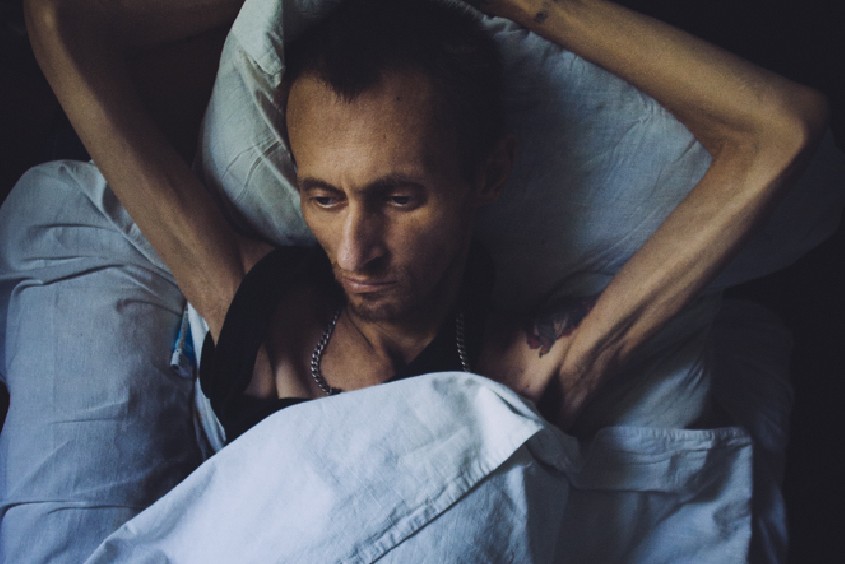
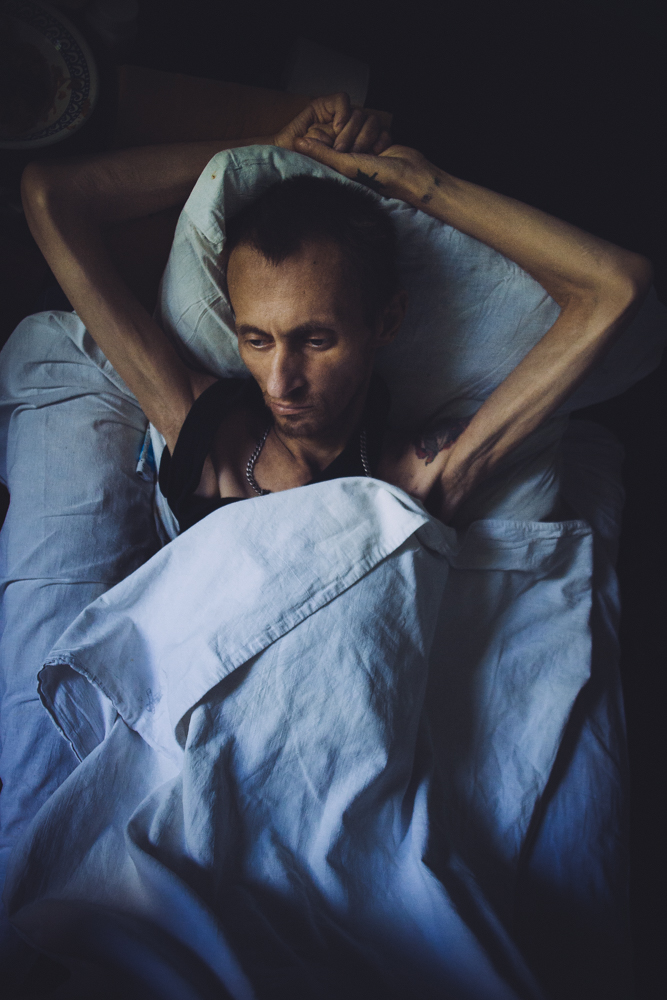

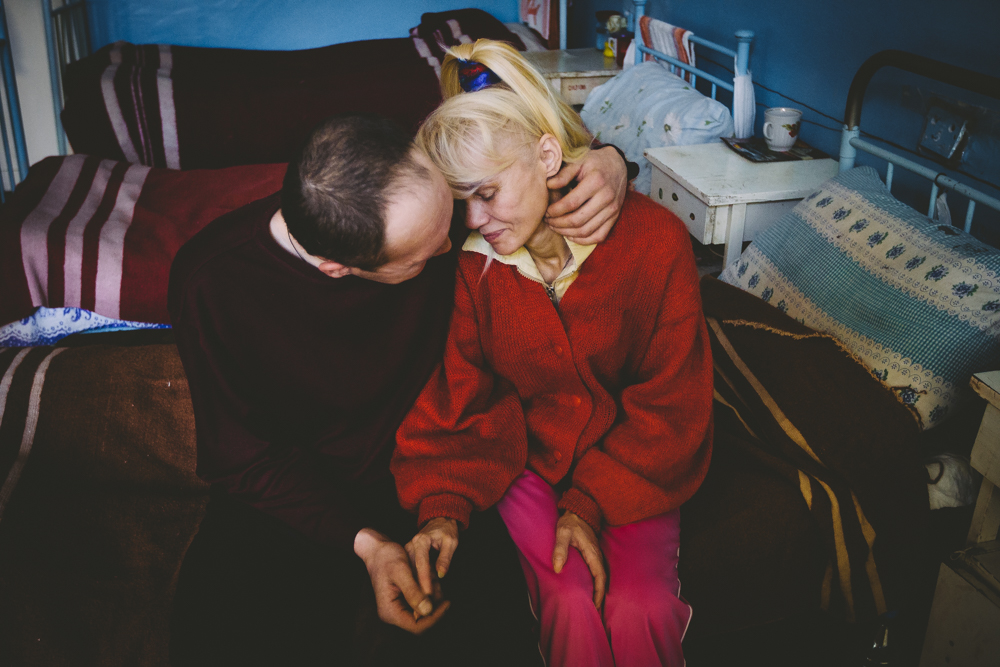
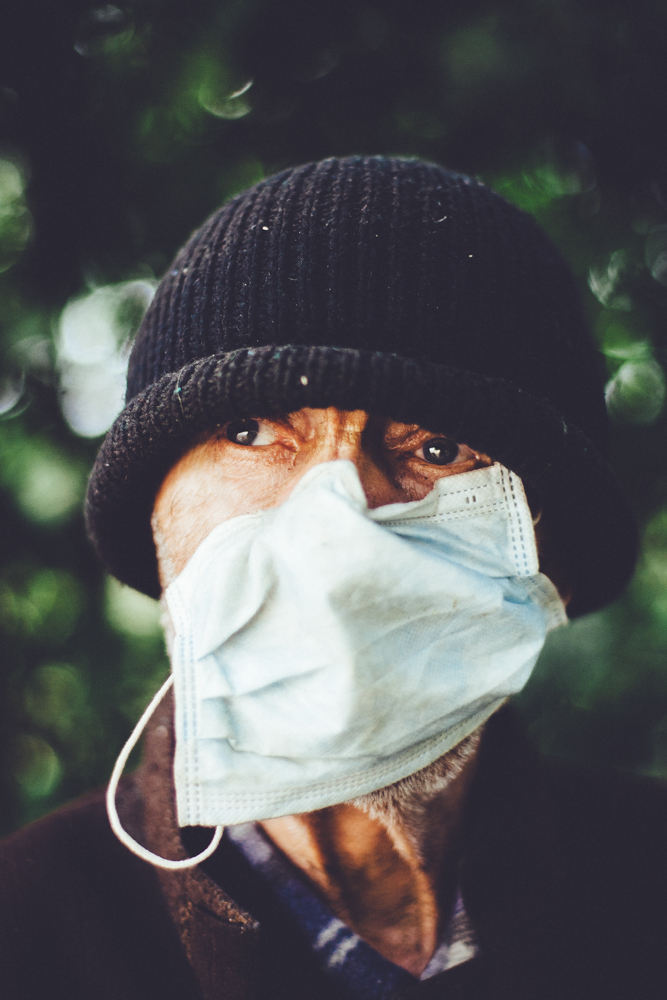
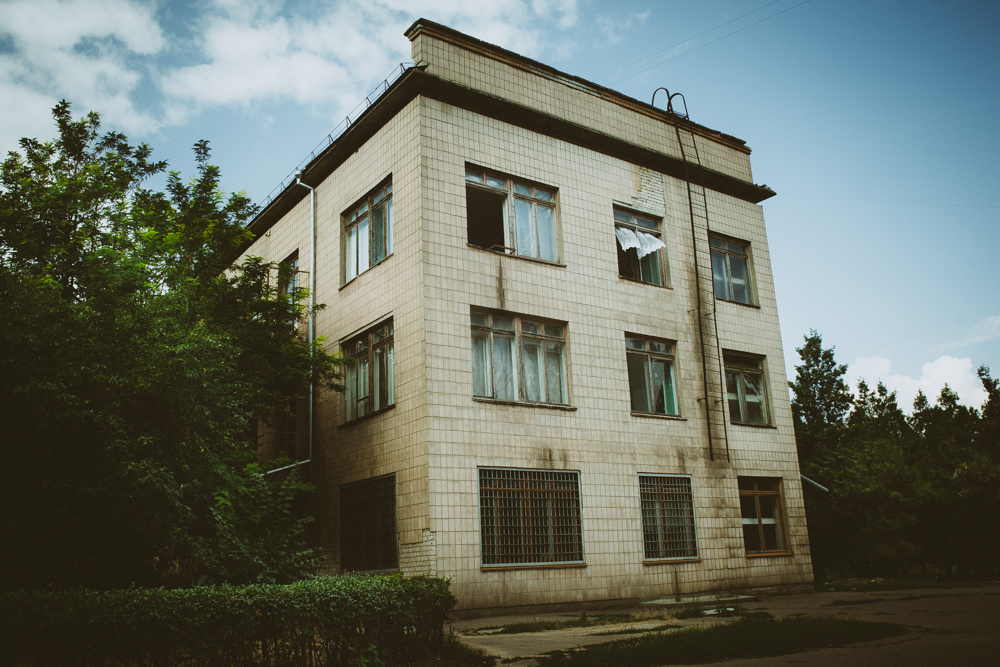
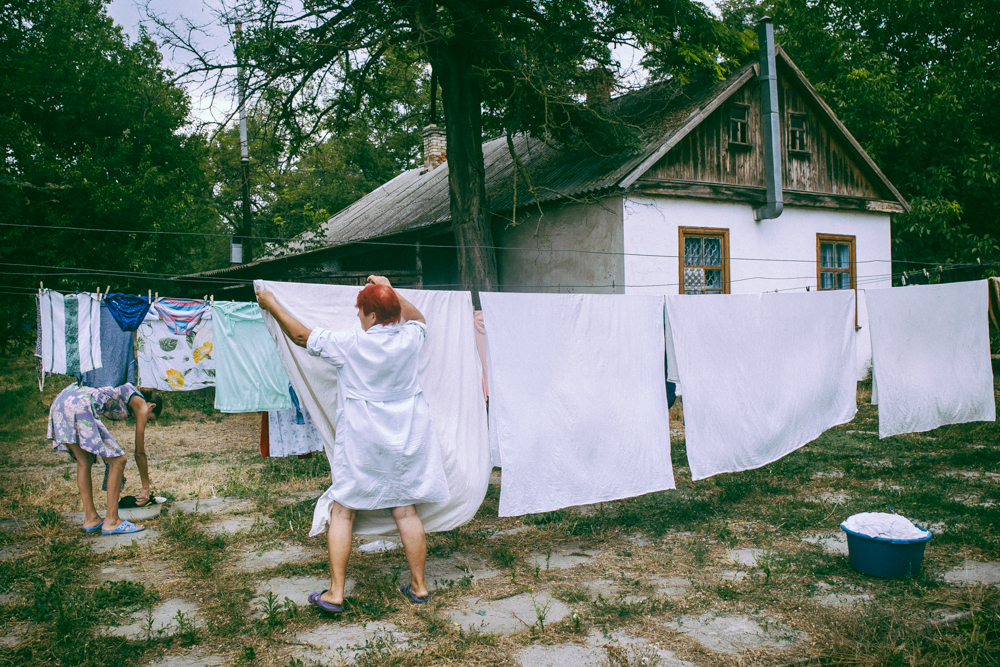
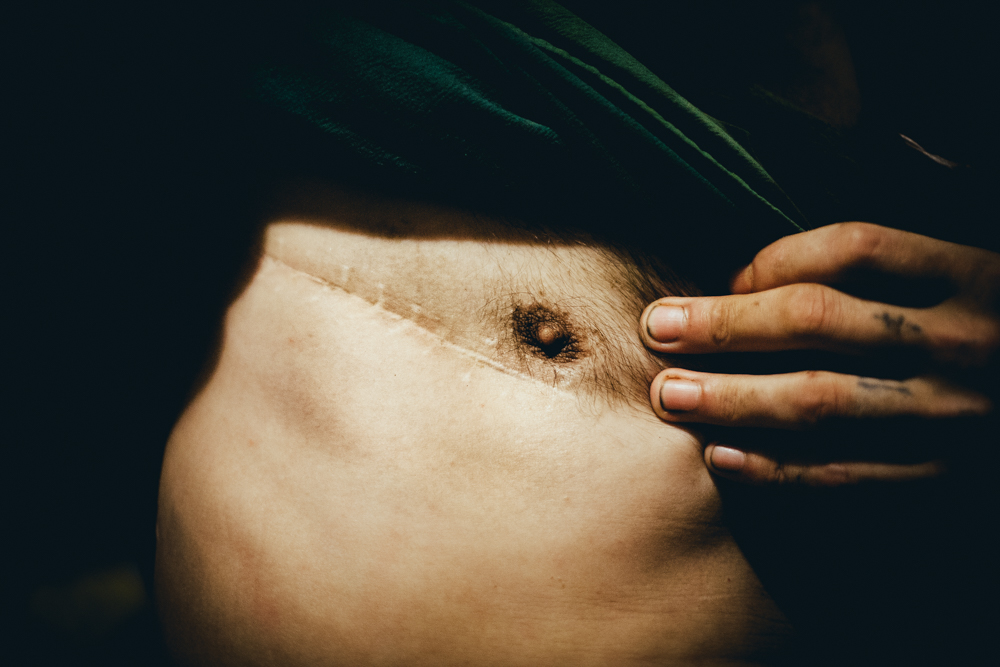
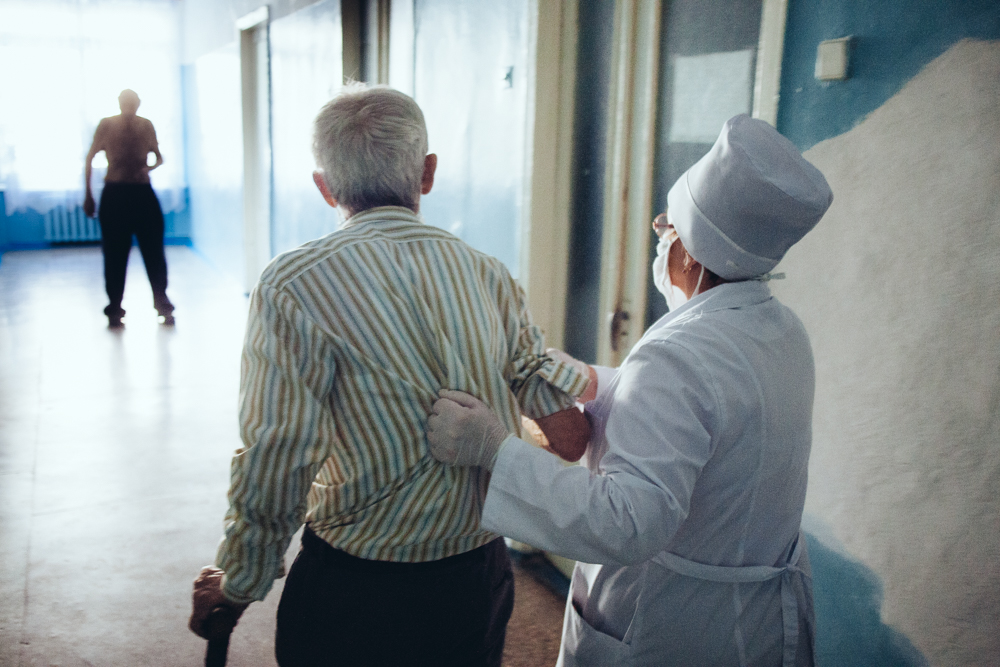

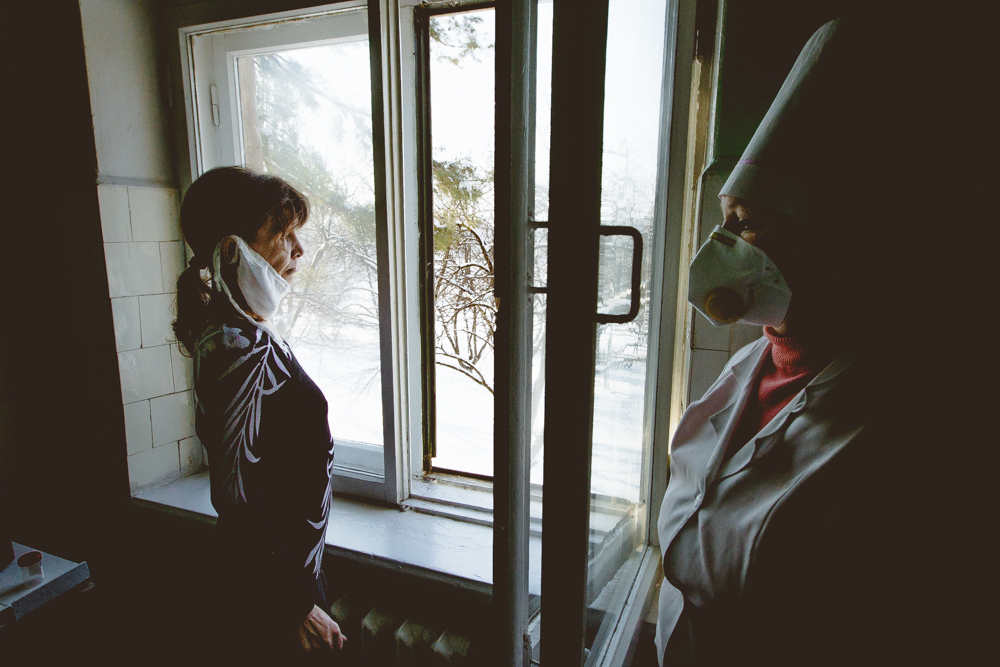
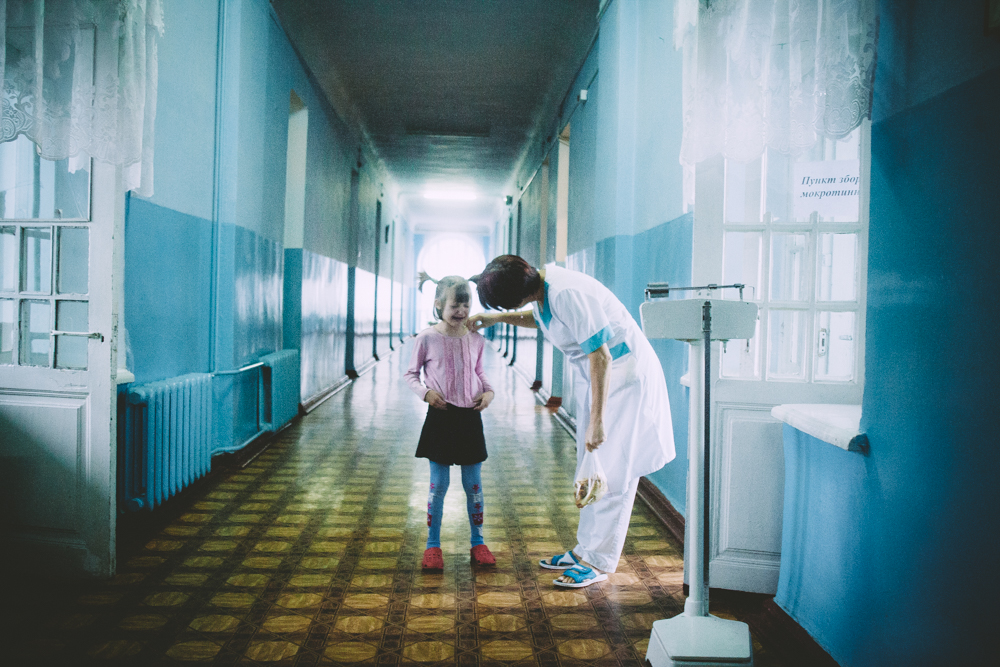
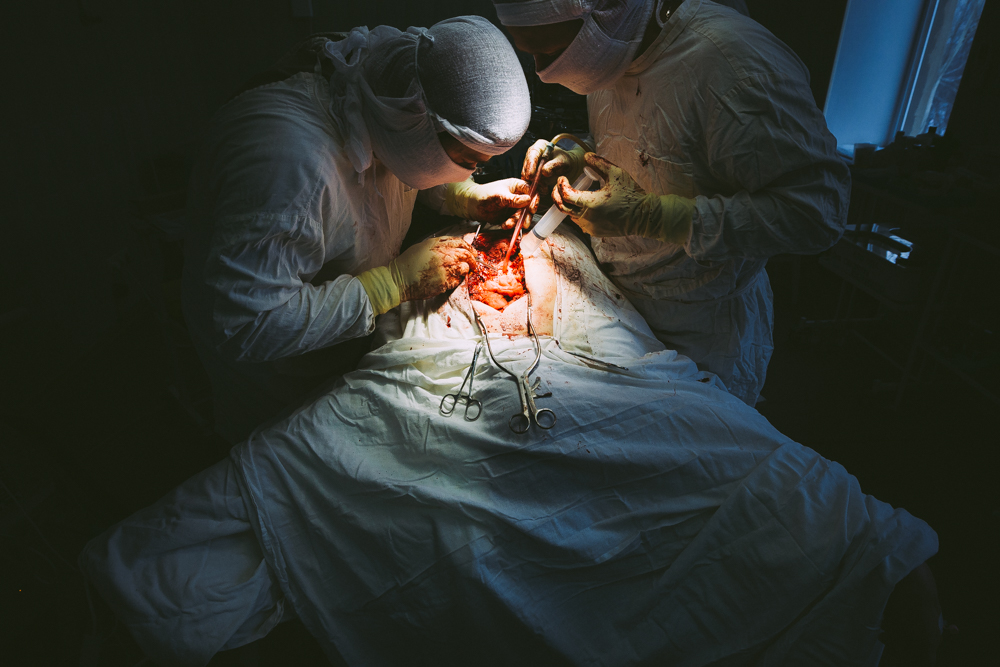
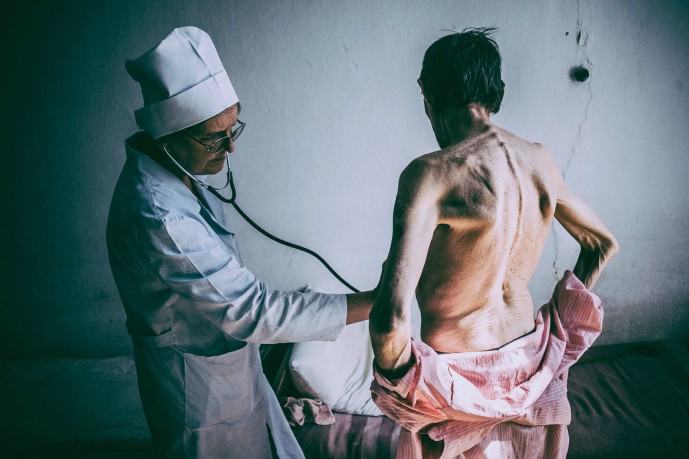
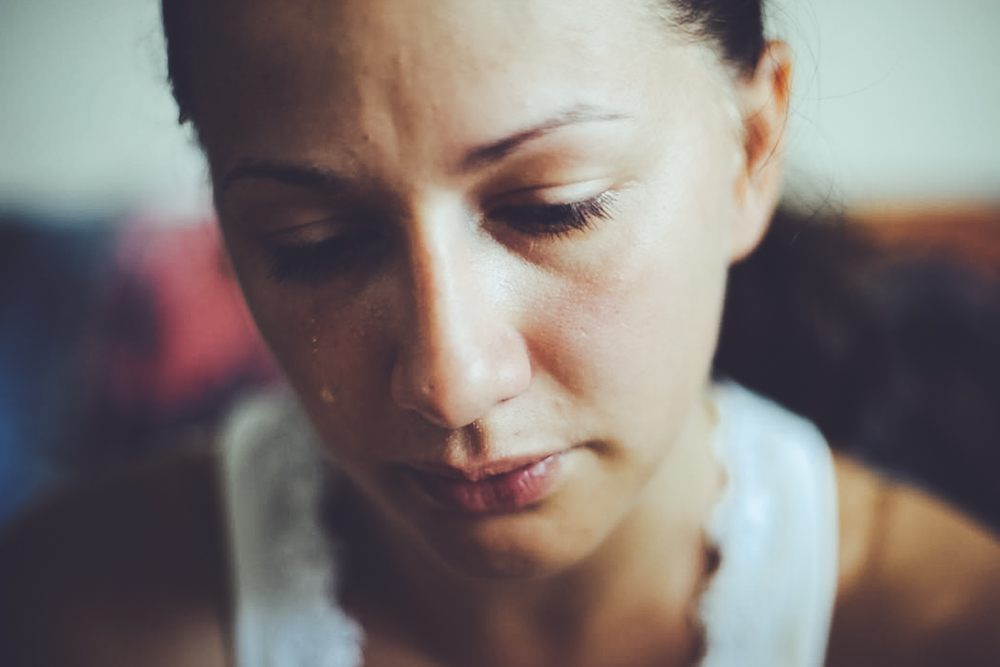
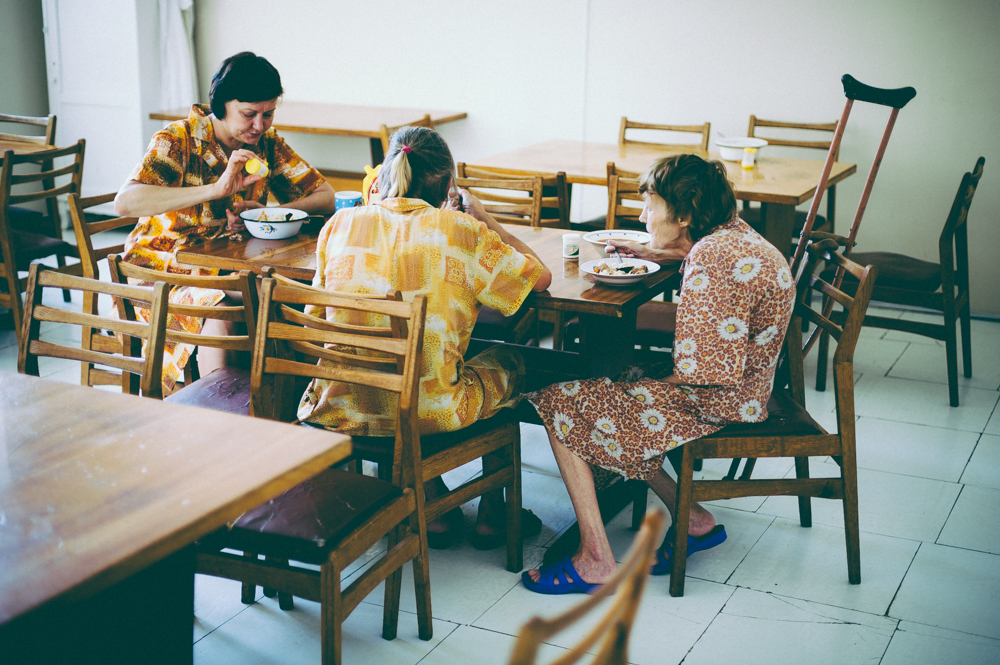
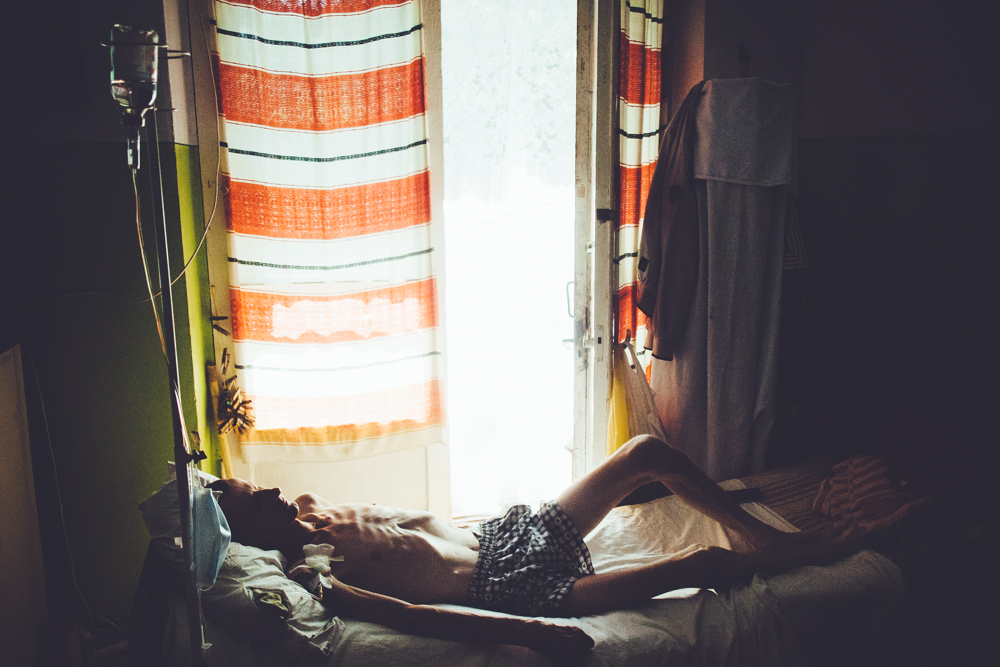

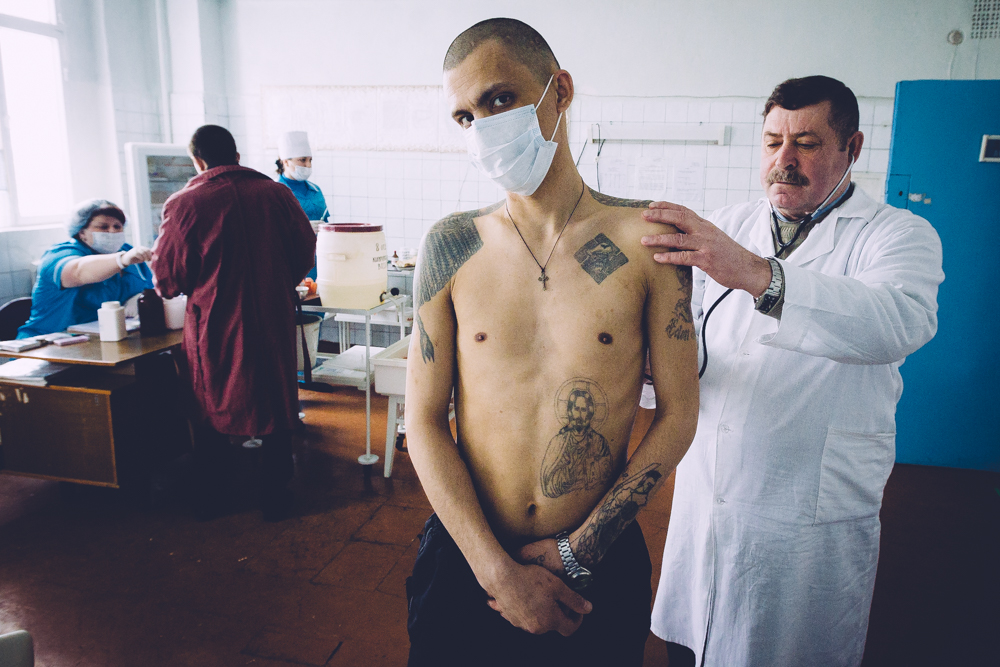
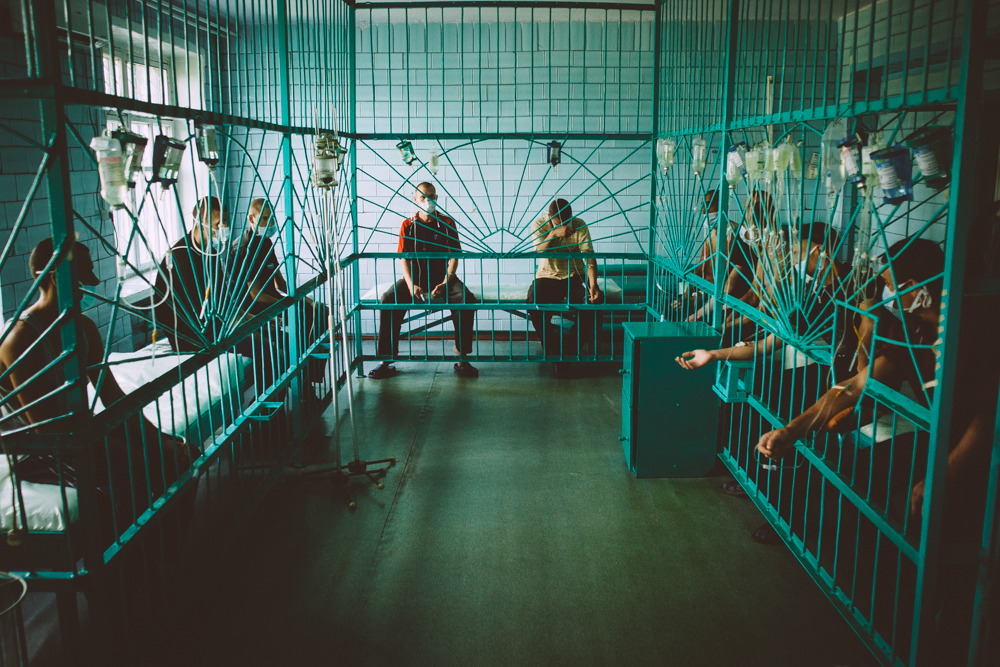
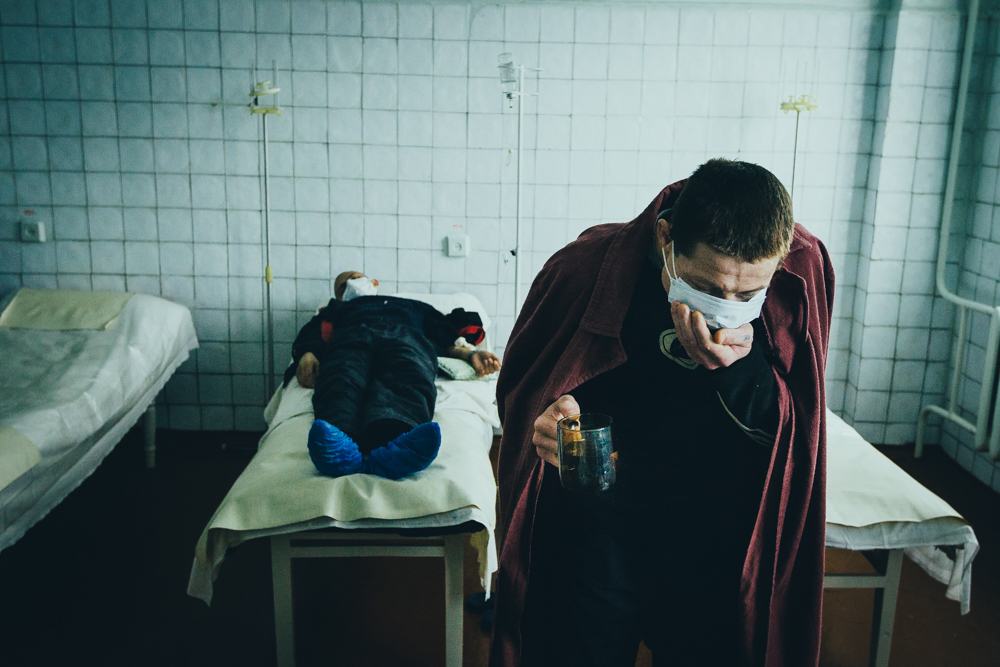
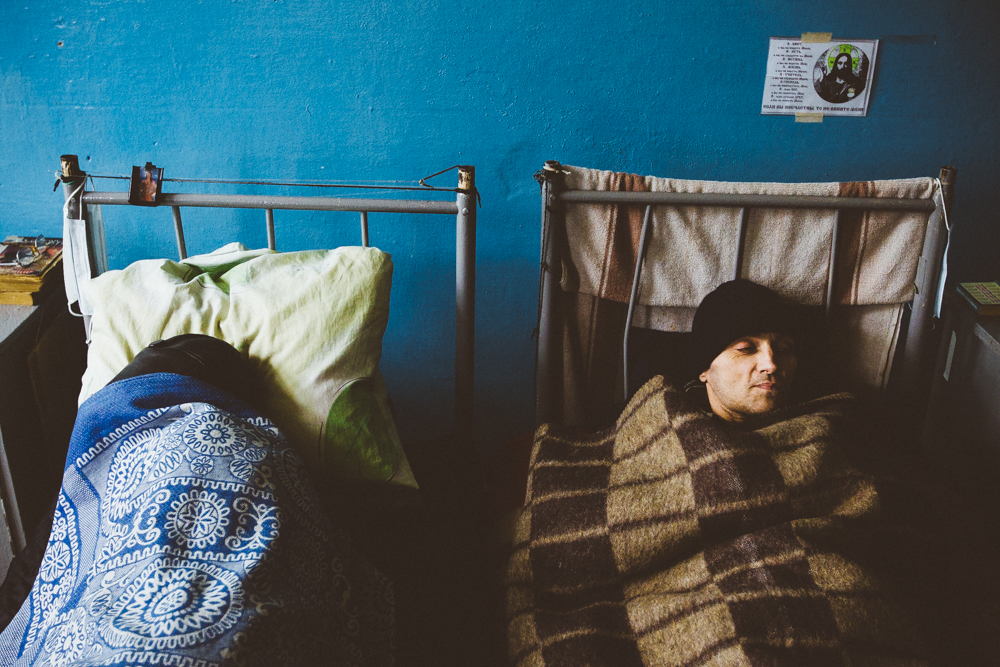
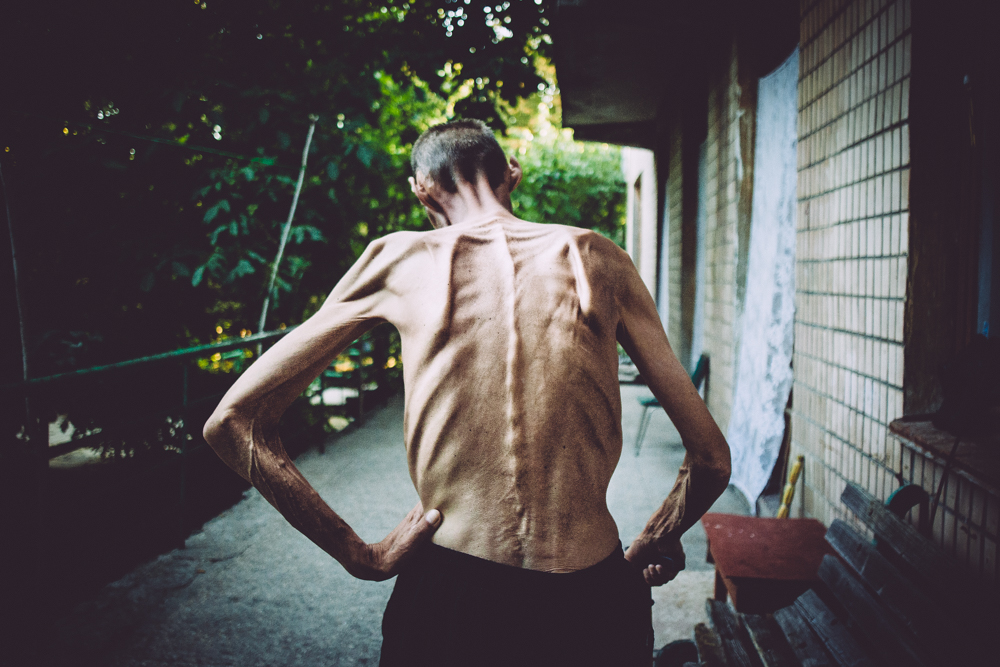
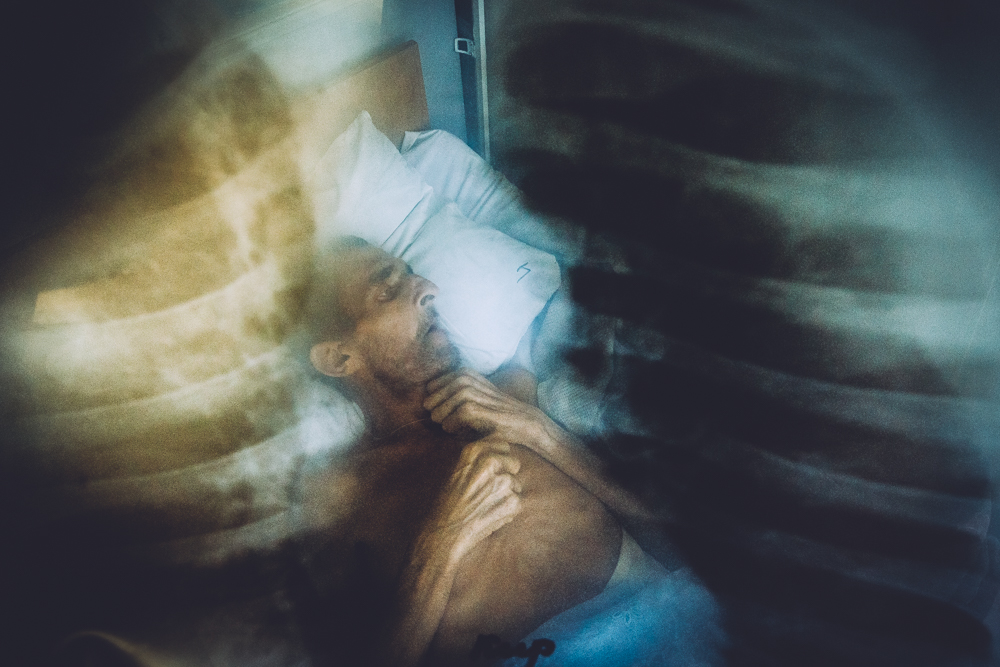
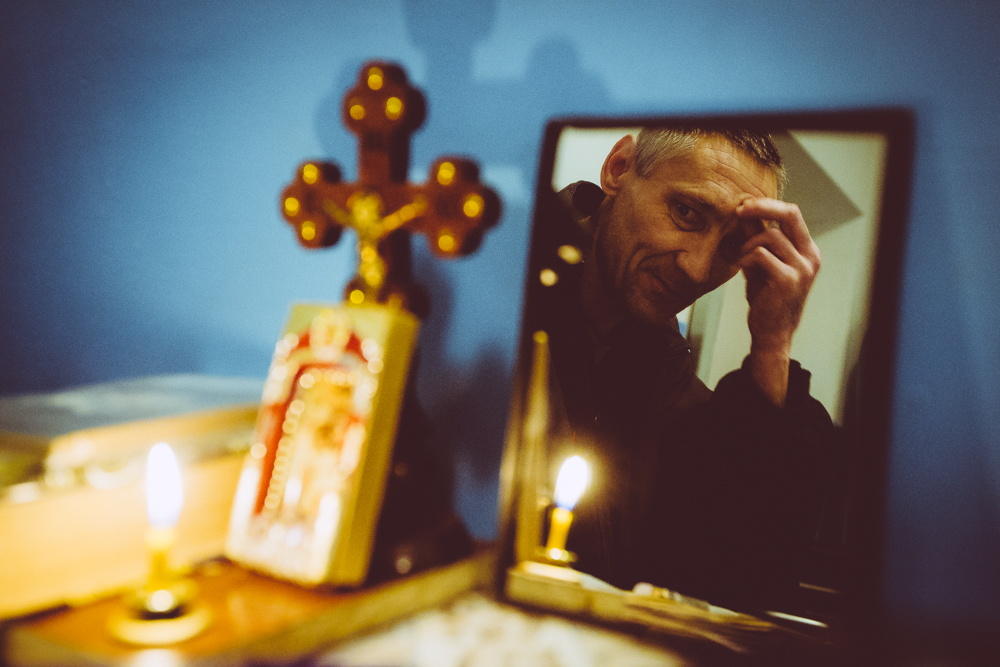
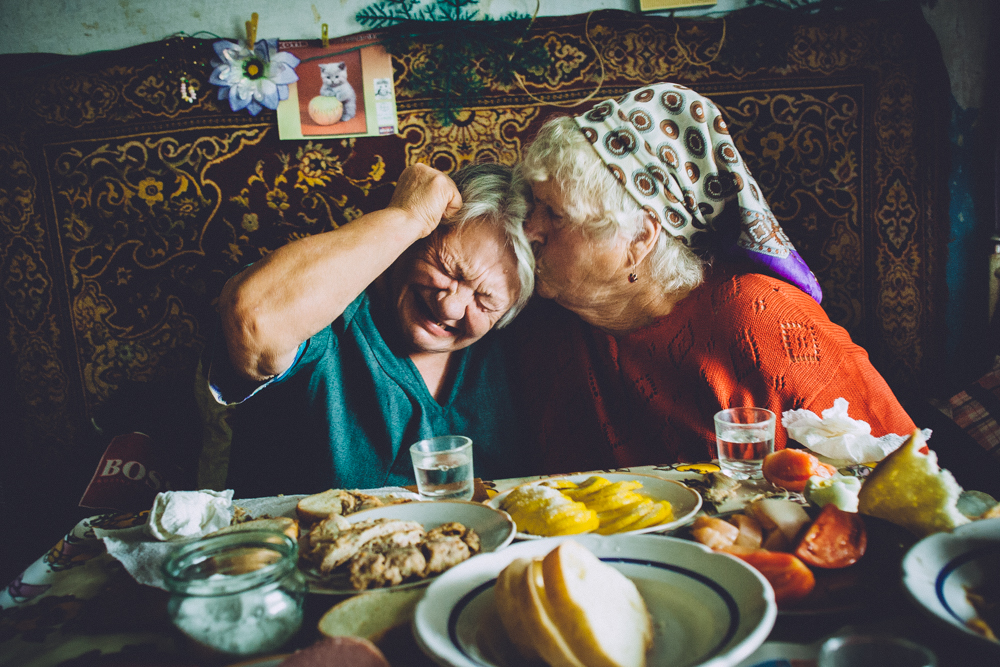
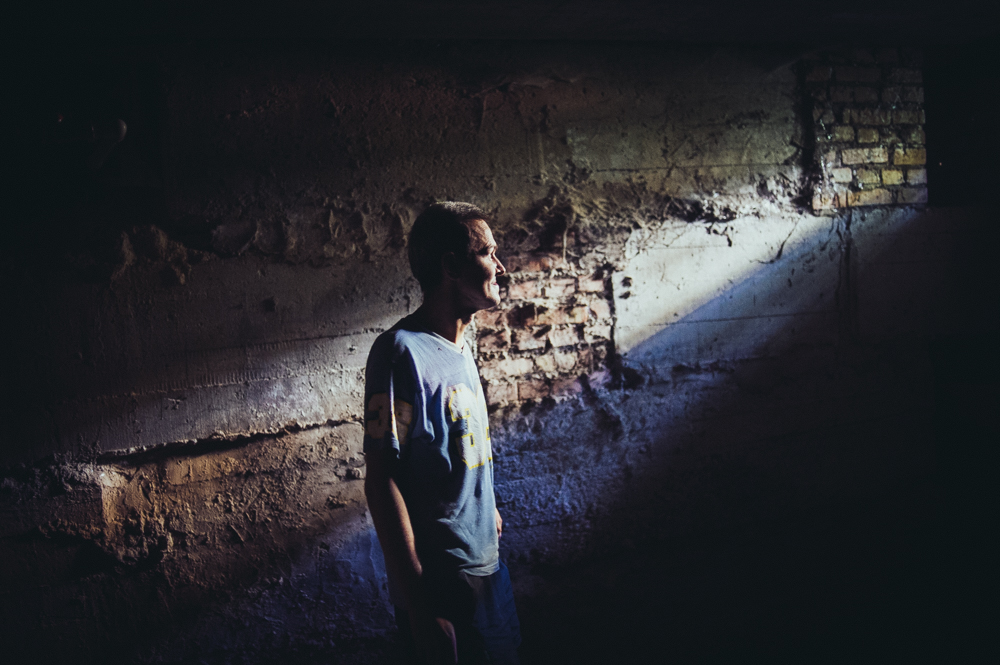
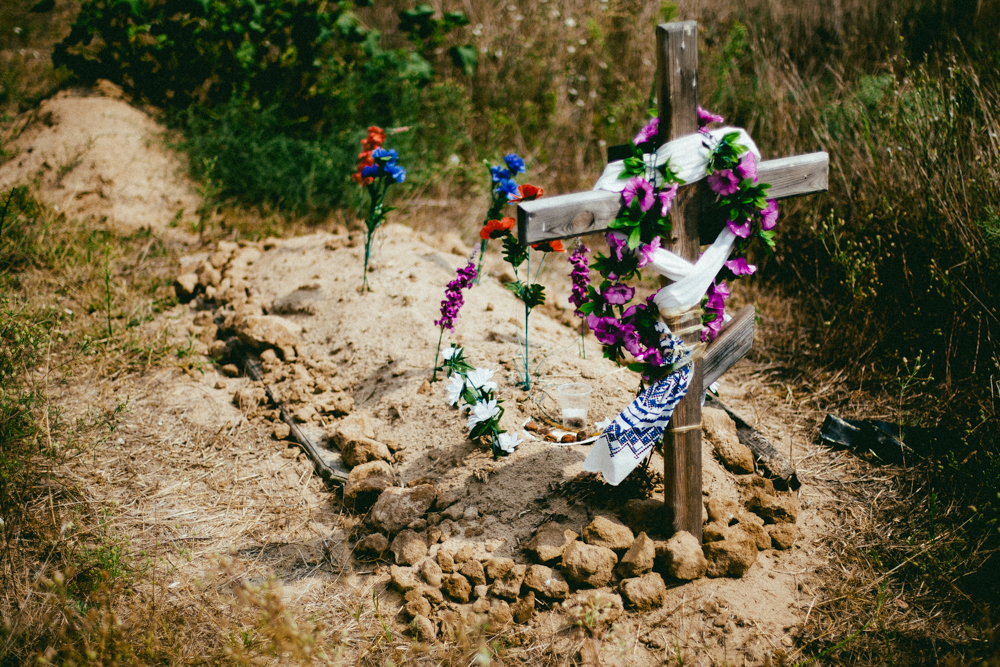
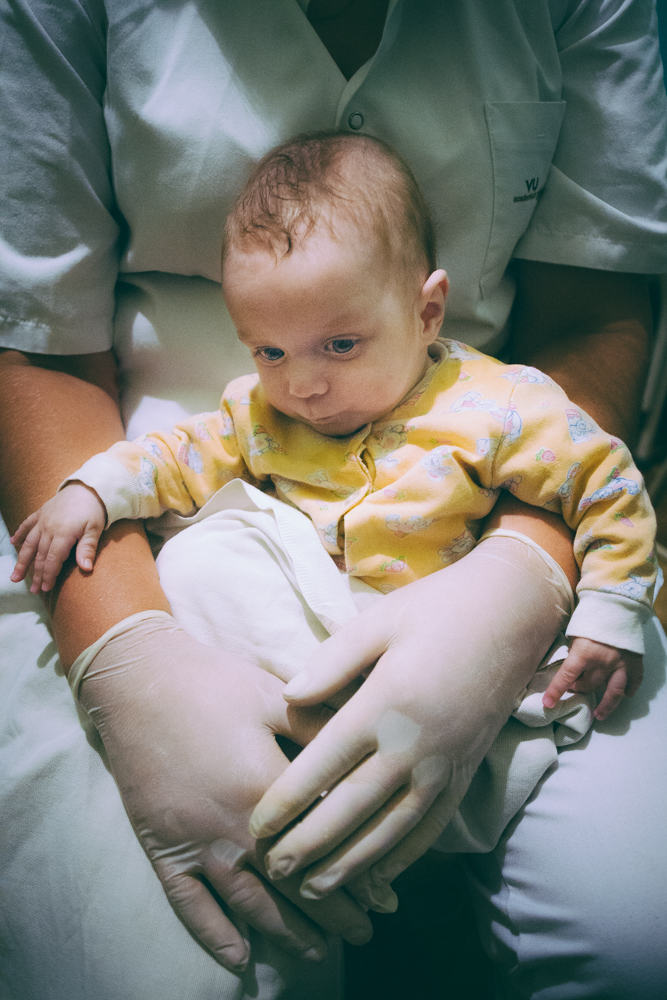
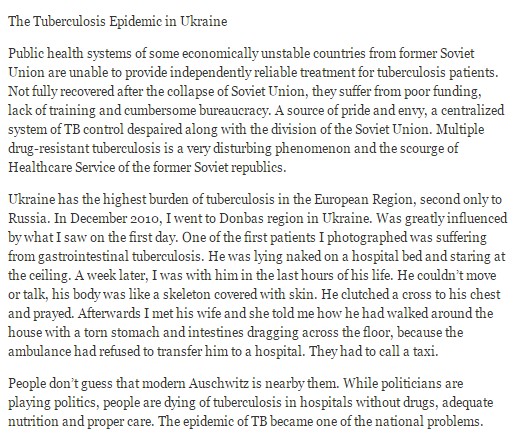
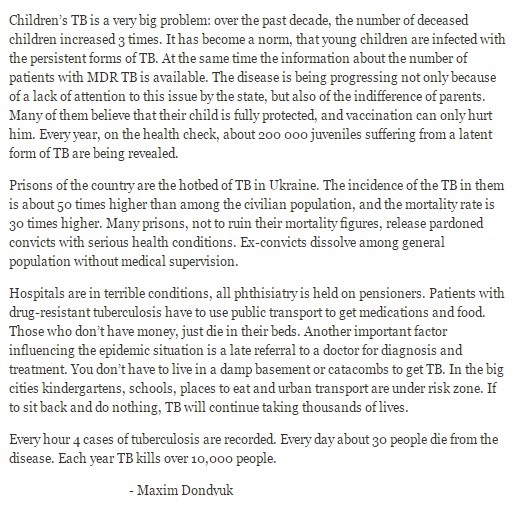
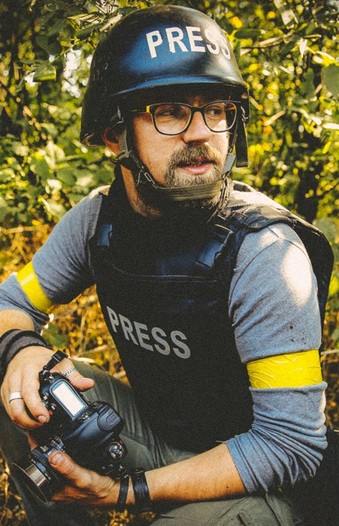
Amazing and depressing.
Just a couple of minor points about the text.
TB is caused by a bacterium, not a virus. Biological viruses aren’t actually alive (any more than computer viruses are computers in and of themselves) so they can’t bounce back from damage and ‘become resistant”. They’re just DNA malware that can be corrupted or ripped apart and thus rendered non-infectious. Antibiotics are utterly useless against viruses, which is why they are no good for treating viral illnesses like the cold or flu.
Bacteria, on the other hand, are living things that take in food and excrete wastes. They can be killed with poisons, including antibiotics which target attributes unique to bacterial cells. They also can develop resistance to poisons. TB is one of a number of bacterial diseases which are becoming immune to all known antibiotics, with scary consequence for us all in the long term.